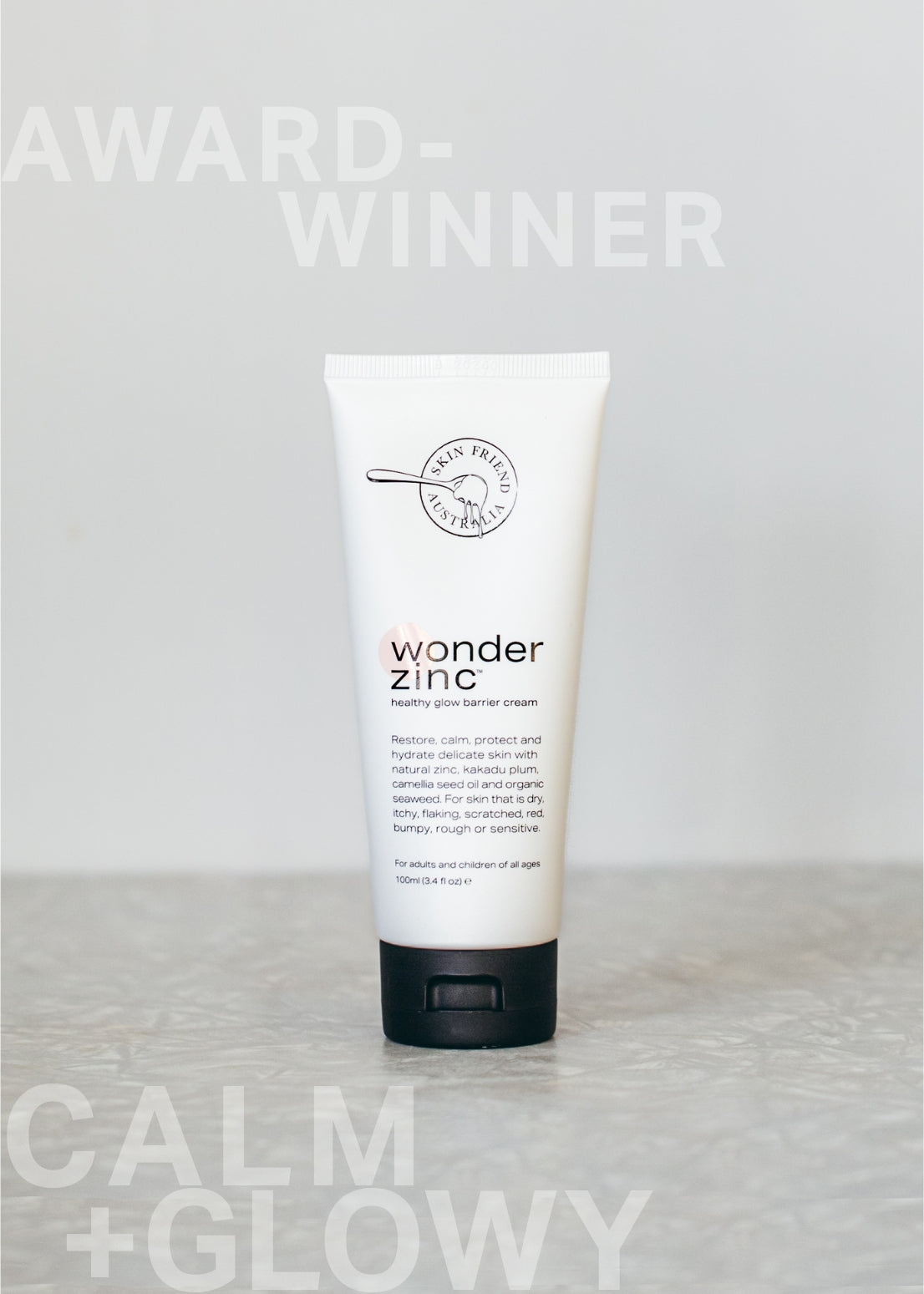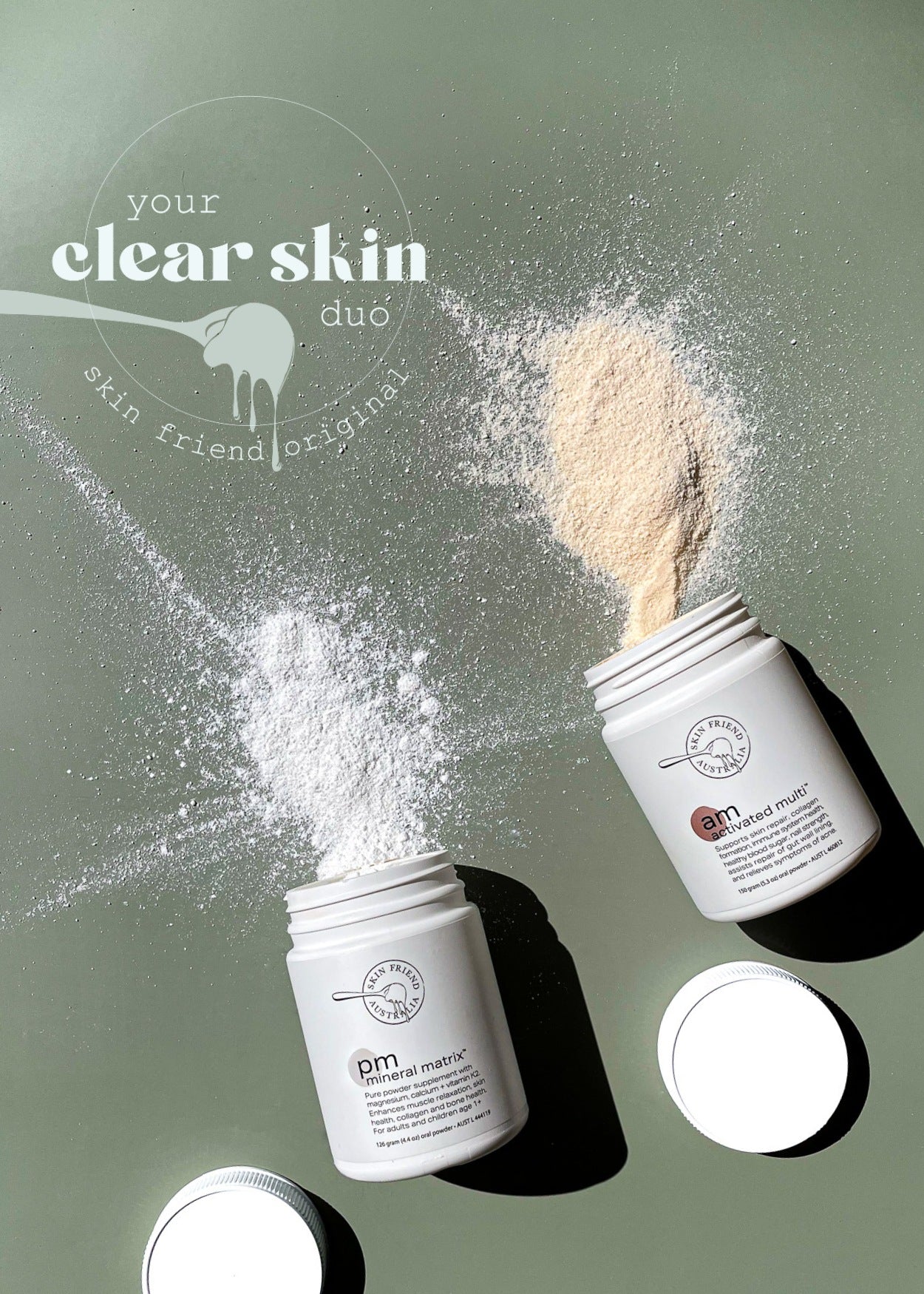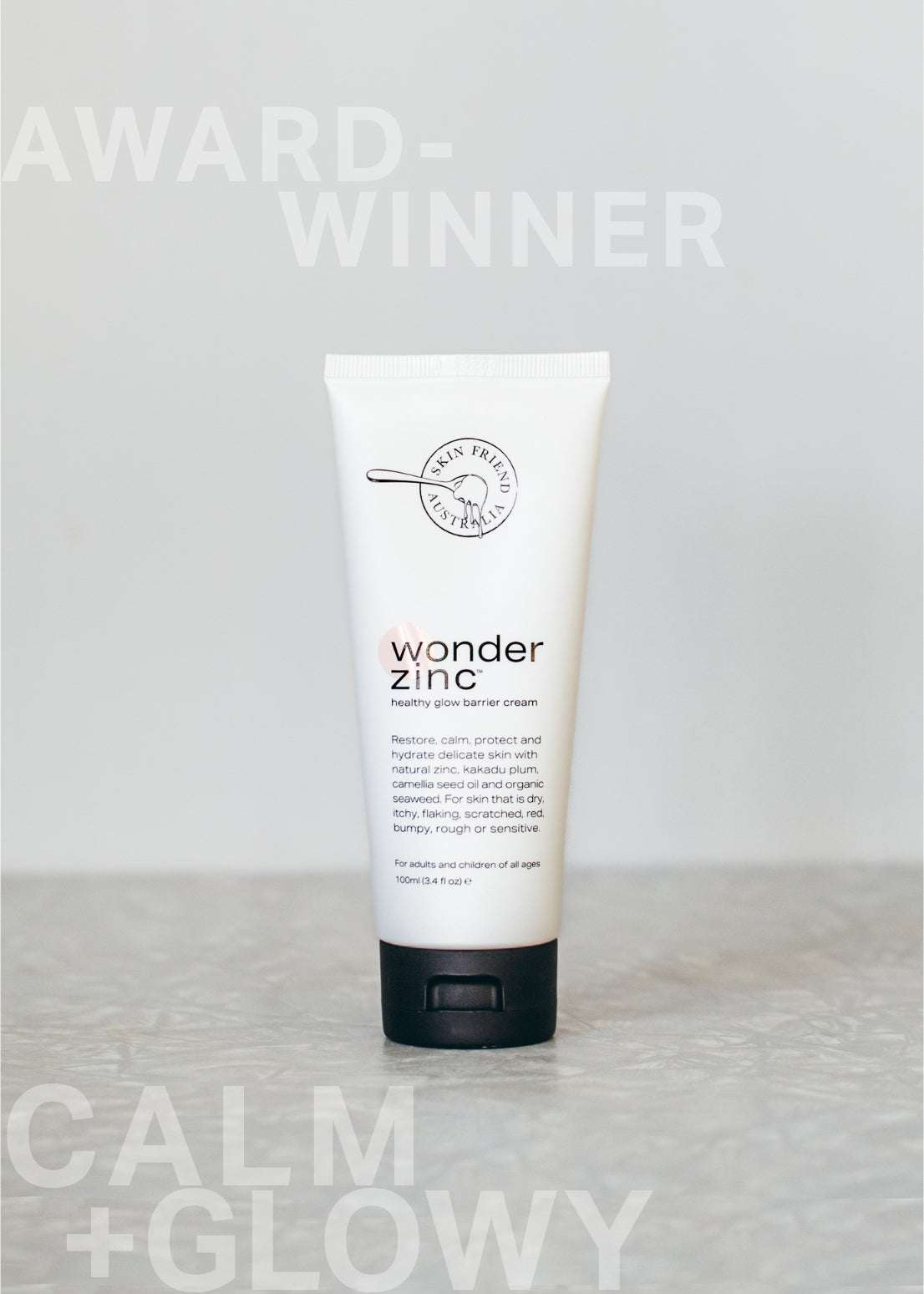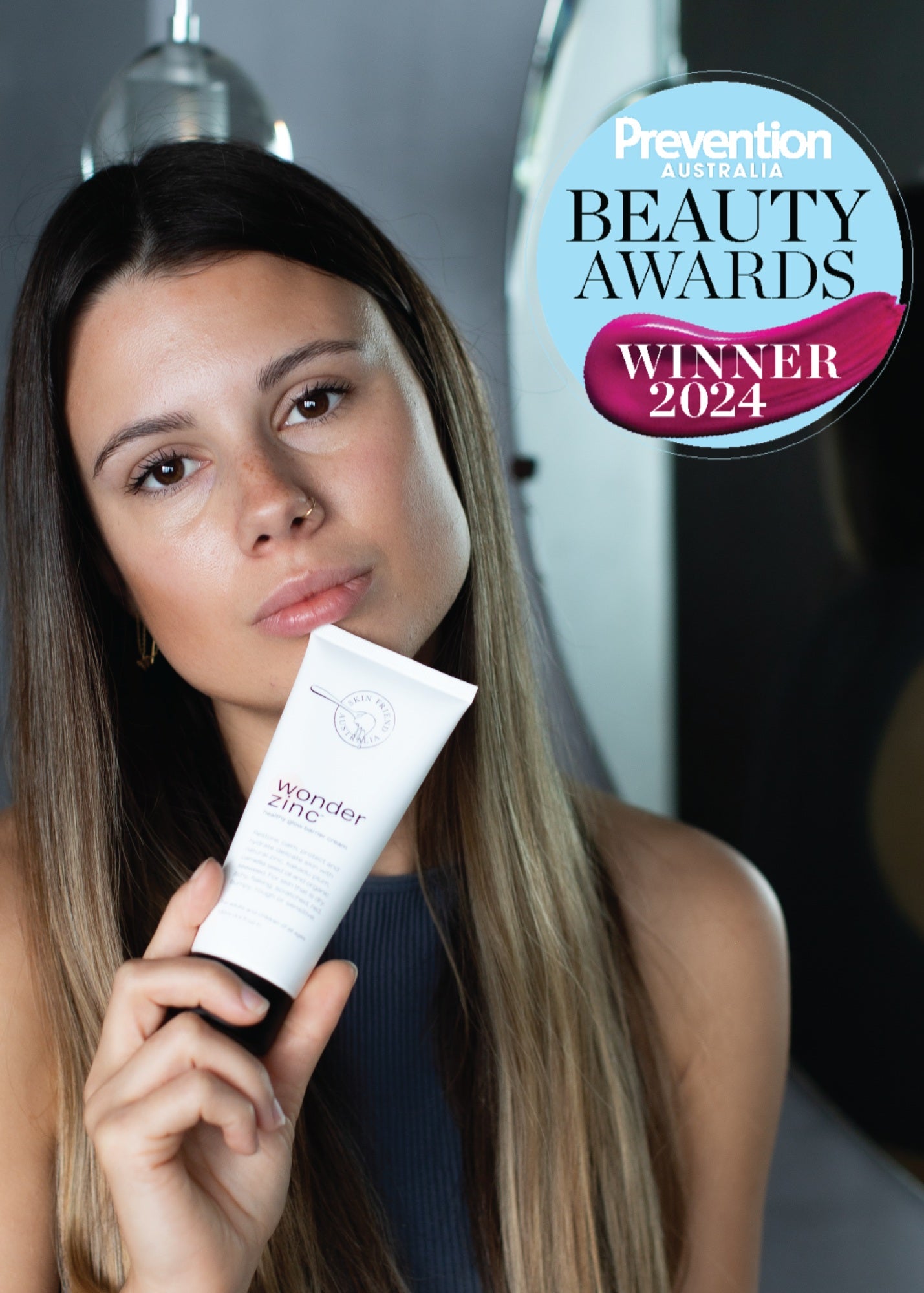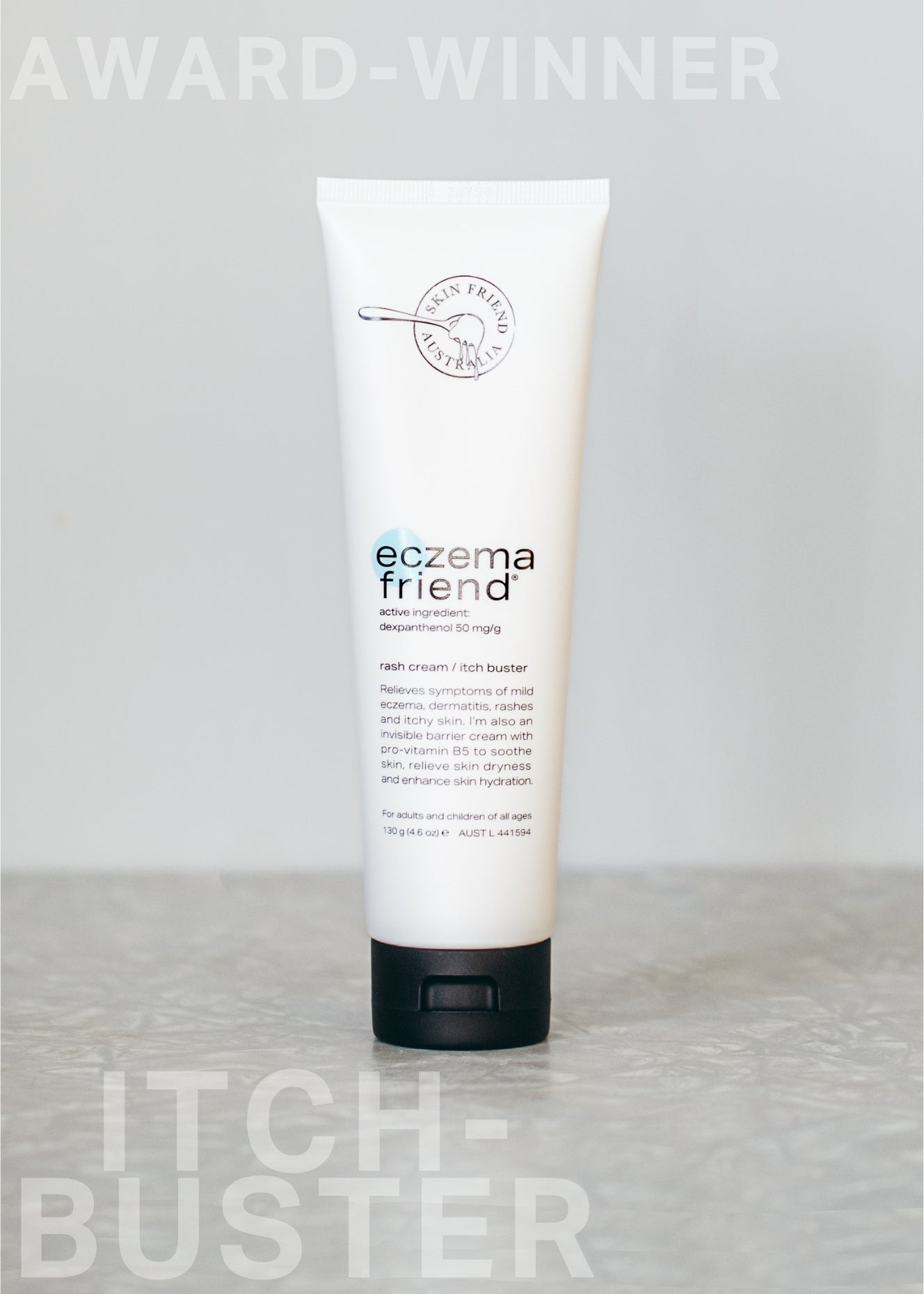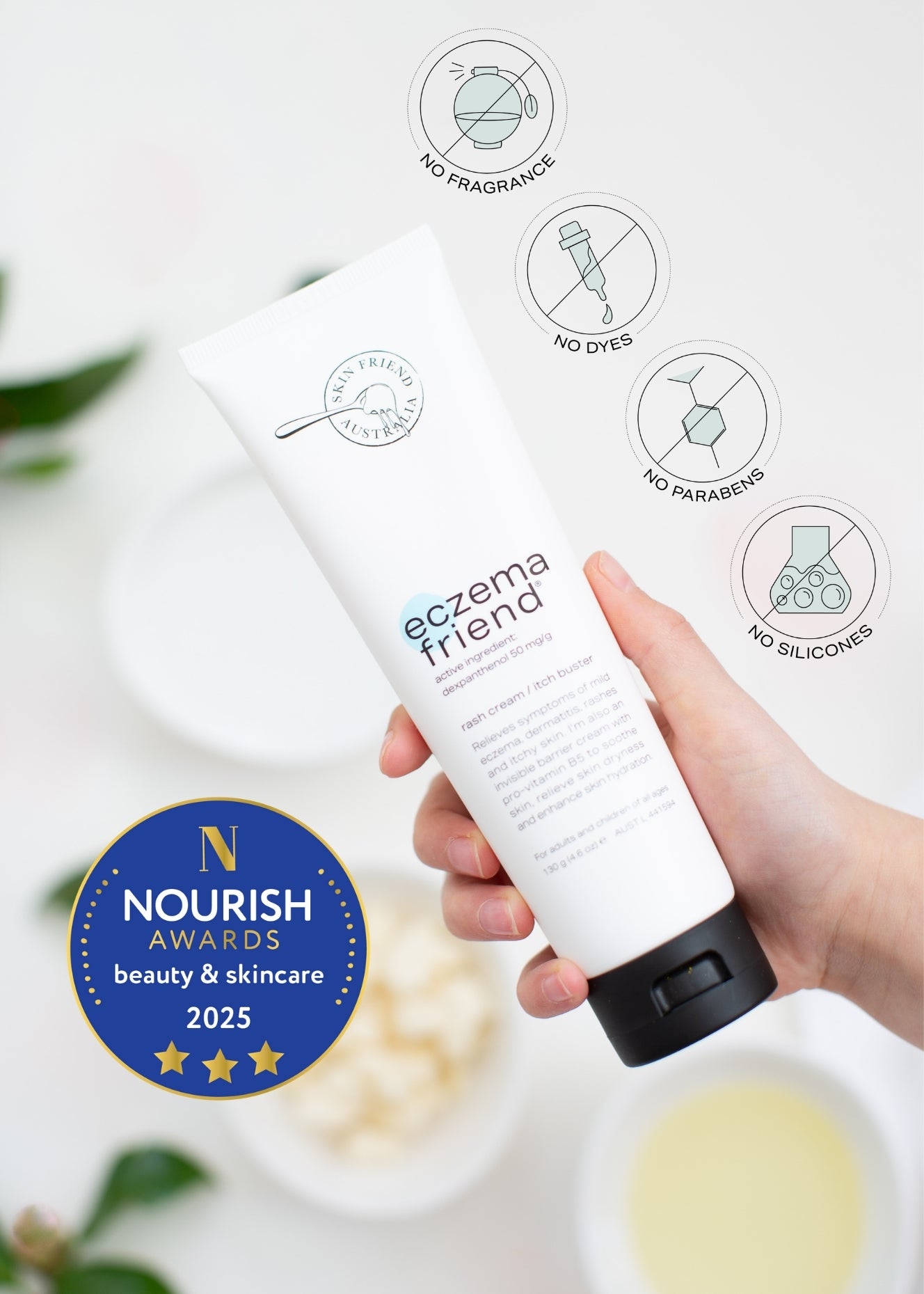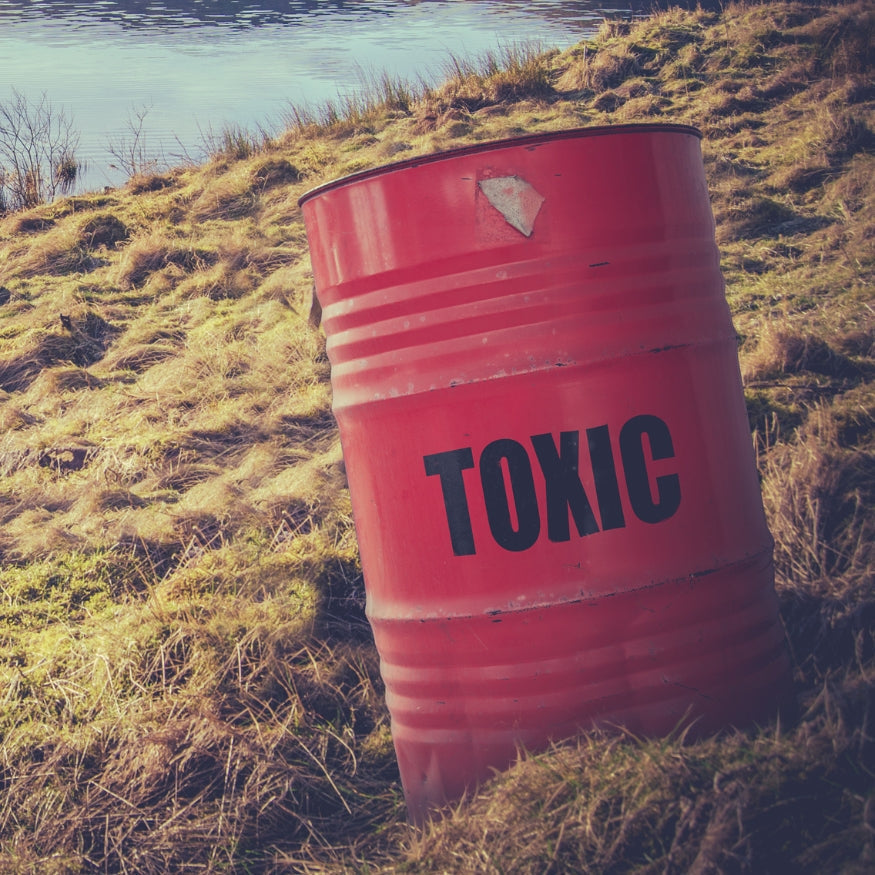Skin Microbiome: The Missing Link in Most Skincare Routines (Part 1)
Yesterday I spoke with a beautiful young woman named Raine, who’s been dealing with eczema and now topical steroid withdrawal (TSW) for the past two years.

Her journey hasn’t been easy.
In 2022, Raine was medically advised to cease the use of both oral and topical corticosteroids, which led to a cascade of serious Staphylococcus aureus (staph) bacterial infections, as well as recurrent fungal infections, including Tinea (ringworm) and Trichophyton spp.
Painful, recurring infections and TSW means she has missed opportunities and has difficulties travelling, as well as constant rashes and shedding skin.
Presently, Raine is receiving important care from her doctors for her latest skin infection, which recently spread like wildfire. As of 4 June 2025, she is on antifungal medications and awaiting mycological skin scraping test results to confirm the current fungal infection, as shown in the images below.

Images: Raine Baljak. Fungal infections appearing as red, flaky skin on Raine's face and body during treatment with antifungals on June 5th 2025.
Once there's an infection, medical treatment is essential. But the deeper question is this: why do some people constantly battle skin infections, while others don't?
It made me reflect on a pattern I’ve seen in patients over the past 20 years and I found a research paper that summed it up nicely. The takeaway message is this:
"Bacterial and fungal infections aren’t the root cause of eczema and other skin problems—they’re a side-effect."
***
So today, I’m sharing part one of a two-step treatment plan I discussed with Raine—because many of our Skin Friend community are going through similar skin issues.
This two-step plan is designed to support your skin’s defences in a way that’s often overlooked. And no—it’s not about throwing probiotics into every cream or capsule. That’s just a band-aid on a bushfire.
This is a deeper problem that can thankfully be fixed. Let’s see what the science says:
The Overlooked Link Between Eczema, TSW, Biome and Infections
A healthy biome and immune system keep potential invaders like staph and candida in check. For example, according to research, bacteria such as staph are naturally found on healthy skin but do not infect the host (you!).
It's only when the microbiome is thrown off balance that these opportunistic pathogens multiply quickly and wreak havoc on your skin.
So the question is this: How do you protect your natural microbiome?
Step 1. Fix The Acid Mantle To Protect Your Biome
Your skin’s natural acidity—known as the acid mantle—is like a built-in defence system for your skin and microbiome. The acid mantle helps protect against microbes such as Staphylococcus aureus (Staph) from running riot and infecting your skin.
I've seen some skincare brands and health professionals say staph is the “cause” of eczema. But here’s the thing: bacterial overgrowth is a symptom, not the root cause.
According to research, the real issue may be something much simpler: incorrect skin pH and it's easy to fix.
Here is the research:
- Staphylococcus aureus (S. aureus), a common cause of staph infections, thrives within a skin pH range of 5.7 to 6.2 but it can live in a pH up to 10.
-
Healthy skin typically has an acidic pH between 4.5 and 4.7 (below 5) which protects against infections like staph.
In comparison, Eczema-prone skin usually has a pH that is above 6, the pH that staph loves.
This is bad news for your biome.
According to research, when skin pH rises to above 6 it disrupts your microbiome flora and can lead to a measurable loss of beneficial bacteria—much of your biome literally detaches from your skin, weakening the skin’s protective barrier.
Even tap water (typical pH between 6–8.5) can temporarily raise your skin pH for up to 6 hours, leaving your skin defenceless—in the meantime, staph and candida have spread like weeds in a bare garden bed. For non-gardeners, that's bad news.
Image: Clay masks such as bentonite clay typically have an alkaline pH, ranging from 8.7 to 9.8, so they are not suitable eczema treatments because they may suppress the acid mantle.
How to Support Your Skin Microbiome Naturally:
You probably already know to avoid soap if you have eczema, and now you know why—soap has an alkaline pH which damages the biome.
While soap is a no-go, the goal isn’t to avoid water or give up cleansing forever. But we do need to rethink what we’re putting on our skin, as most cleansers and even “clean” skincare can have a pH over 5.0 or even above 6, which is disastrous for your microbiome if you use these products daily.
The general assumption in the skincare manufacturing world is that a pH of 5.5 to 6.0 is "pH balanced" skincare. However, that’s not true.
So, "pH balanced" is a marketing statement based on outdated science.
Instead, naturally protect your skin microbiome, re-acidify your skin daily. That means applying a low-pH moisturiser immediately after bathing to help restore pH and support your microbiome before any damage occurs. Use pH optimised skin care which is a pH between 4.0 and 4.7.
That’s exactly why I formulated 24-Hour Rescue (with pH 4.5) and Eczema Friend (with pH 4.6). They’re designed to bring your skin’s pH back into a healthy range—especially important after showering or cleansing, when your skin is most vulnerable.
Ever wondered why steroid creams often lead to recurring skin infections?
I did too—so I looked into the research. There wasn't much available but I found this:A recent randomised controlled trial (RCT) involving people with eczema found that using a topical corticosteroid for just one week raised the skin’s pH above 5. Here's the issue: skin pH above 5.0 can increase the risk of Staph infections, so that research suggests topical steroids do not support healthy skin pH.
This conclusion is supported by another study which found that skin with a pH below 5.0 is healthier—showing better barrier function, hydration and less scaling.
So there is no proof that steroid creams support the skin's natural acid mantle, and the opposite may be true, but more (unbiased) research is needed.

Image: Be mindful of what skin creams you choose for your (or your child's) skin. Check the pH first — "pH balanced" is not necessarily a good option because it could mean the pH is above 5.5, which not ideal. A good skin cream will have a pH between 4.0 and 4.7 for skin and biome health. Most skincare companies do not check product pH (you have to request this test).
The Itchy Skin Fix Hiding in Plain Sight: Why Restoring pH Could Stop the Scratch
If your (or your child’s) skin is itchy—even in spots that look normal—it might mean your skin pH is too high. A study of 284 children (in 2006) found that those with eczema had more alkaline skin, and the itchier they were, the higher their skin pH. While some researchers hypothesise that staph causes the itch—the underlying root cause of staph appears to be an alkaline pH. So the itchy skin solution is this:
Restore the acid mantle.
Acidification of your skin can bring fast relief to itchy skin, which may be why Eczema Friend relieves the itch, because it has an acidic pH of 4.6, aligned with the natural pH of healthy skin.
Raine's progress report after 3 days using Skin Friend:
"My skin has definitely been going through a rough patch, but even after 24 hours of use of the topical antifungals + Wonder Zinc + Eczema Friend have helped seal the skin and bring it back to more normal appearances with minor redness and scaling. It’s reassuring to know about the low pH benefits too, thank you for explaining that.
It is SIGNIFICANTLY less red and sore, and thankfully less dryness and peeling." Raine Baljak (see images, below)

Images: Raine Baljak before and 3 days later. Fungal infection during treatment with antifungals plus Wonder Zinc to reduce red skin and support wound healing, and Eczema Friend to relieve dry skin and mild eczema, while addressing skin pH and hydration. Note: Wonder Zinc would be great to use on the wounds on her stomach.
Follow Raine Baljak's journey at skinfriend.com
READ PART 2 of Raine's journey to clear skin here: Raine's Recovery PART 2
FAQ: What about bleach baths to kill staph?
While bleach baths are an effective way to kill staph in infected eczema, diluted bleach baths have a highly alkaline pH around 9.0, which will temporarily unbalance your acid mantle, kill beneficial skin flora and leave your skin vulnerable to attack for hours afterwards.
If you need to use bleach baths on your doctor's advice, rinse and dry your skin, then apply Eczema Friend afterwards to restore your skin's pH and increase hydration, as bleach baths can be extremely drying on your skin.

Image: Bubble baths damage the skin barrier so they should be avoided.
Why I Made My Own Products
I’ve had dry, flaky, eczema-prone skin since I was 10 years old.
As a teenager, I relied on topical steroids—especially on my face. And as an adult, I believed thick ointments were the only way to protect my skin. I’d apply them before bed, hoping they’d help, but I’d often wake up with tight, dry, stinging skin—especially on my lower legs. The only relief? More ointment. I was stuck in a cycle where my skin constantly needed sticky creams that stained my clothes and sheets.

Images: My skin during an eczema flare and a close up of my legs when they were infected; my skin now (calm, strong, and more resilient).
That’s one of the many reasons why I developed Eczema Friend and Wonder Zinc. These products are designed to strengthen the skin barrier, so you skin becomes less reliant on moisturiser.
Since switching to these products (and changing my diet), I can now go more than 48 hours without applying any moisturiser—on both my face and body. Now I know my skin barrier is healthy as it's rash-free and not reliant on moisturiser.
Why do I use them when I don't have eczema?
I continue to use Eczema Friend to support my skin's biome after showering (water has an alkaline pH so I apply it after showering), and both creams reduce wrinkles (I'm 52), and they protect my skin from future flares, so I'm not afraid of my eczema returning. Plus, Skin Friend creams contain proven actives and I trust them on my skin and my family's skin.
Are ointments good for eczema?
Not really, but they are useful short-term, as they protect skin that has been lasered or damaged. They are a band-aid solution and not the best support for true skin health. Ointments and balms don't have a pH as they don't contain water (or only a little water) so they don't restore skin pH. However, they can be useful for other reasons, just don't over use them—use once per day or less, and only the tiniest amount so you don't suffocate your biome (strictly no slugging!).
 Image: Olive oil, while great to eat, should not be applied on your skin as it damages the skin barrier and increases skin redness on healthy skin and eczema-prone skin, according to research. About 80% of skin care products contain olive oil so check labels and avoid ingredients such as "Olea europaea".
Image: Olive oil, while great to eat, should not be applied on your skin as it damages the skin barrier and increases skin redness on healthy skin and eczema-prone skin, according to research. About 80% of skin care products contain olive oil so check labels and avoid ingredients such as "Olea europaea".
What about pure oils for eczema?
They are average, at best. Pure oils do not have a pH as they are water-free so they do not help to restore the skin's pH or acid mantle. If you want to use oils on your skin, check they are produced in a GMP facility or a manufacturing plant that does rancidity tests.
Our manufacturer tests for oil rancidity and often send oils back to the supplier because they are rancid. So even new oils can be rancid.
Why is this bad news?
Unpreserved oils (like the ones you buy online) can go rancid easily and applying them to eczema can cause skin infections.
I do NOT recommend applying pure oils to eczema, not even coconut oil, tallow or jojoba oil because of this reason. And natural topical oils should not be applied on baby skin as it may contribute to the development of childhood atopic eczema, according to research. Despite being natural, oils are risky and there is no proof they help eczema as they do not contain active ingredients.
Scientifically proven actives such as dexpanthenol (provitamin B5) are 100 times better for eczema than pure oils, because it restores the skin barrier and reduces eczema flares—the science has confirmed this, so why settle for less?
Both Eczema Friend and Wonder Zinc contain dexpanthenol (provitamin B5) in active amounts. This means they are science-based formulas that work.
In Conclusion:
Address Your Skin pH For Microbiome Health
With the right pH-optimised skincare routine, you’re already taking a powerful step toward healthier, more resilient skin—and a supported skin microbiome.
Click here to get your skin pH repair program today.
 Image: Eczema Friend is pH optimised skin care for people with skin rashes of all kinds. Created by nutritionist Karen Fischer, author of The Eczema Diet and The Eczema Detox, after years of research and working with eczema patients. It's skin care you can trust.
Image: Eczema Friend is pH optimised skin care for people with skin rashes of all kinds. Created by nutritionist Karen Fischer, author of The Eczema Diet and The Eczema Detox, after years of research and working with eczema patients. It's skin care you can trust.
Click here to buy Eczema Friend
Part 2: The Immune System Treatment Plan
Read PART 2 of Raine's treatment plan where we reveal here Immune System Recovery Plan. Read it here.
Scroll down for Raine's Reels and to shop the story.
Research
Brooks SG, Mahmoud RH, Lin RR, Fluhr JW, Yosipovitch G. The Skin Acid Mantle: An Update on Skin pH. J Invest Dermatol. 2025 Mar;145(3):509-521. doi: 10.1016/j.jid.2024.07.009. Epub 2024 Sep 5. PMID: 39243251.
Chang CH, Chovatiya R. More yeast, more problems?: reevaluating the role of Malassezia in seborrheic dermatitis. Arch Dermatol Res. 2024 Mar 12;316(4):100. doi: 10.1007/s00403-024-02830-7. PMID: 38472524.
Nakatsuji T, Chiang HI, Jiang SB, Nagarajan H, Zengler K, Gallo RL. The microbiome extends to subepidermal compartments of normal skin. Nat Commun. 2013;4:1431. doi: 10.1038/ncomms2441. PMID: 23385576; PMCID: PMC3655727.
Surber C, Humbert P, Abels C, Maibach H. The Acid Mantle: A Myth or an Essential Part of Skin Health? Curr Probl Dermatol. 2018;54:1-10. doi: 10.1159/000489512. Epub 2018 Aug 20. PMID: 30125885.
Lambers H, Piessens S, Bloem A, Pronk H, Finkel P. Natural skin surface pH is on average below 5, which is beneficial for its resident flora. Int J Cosmet Sci. 2006 Oct;28(5):359-70. doi: 10.1111/j.1467-2494.2006.00344.x. PMID: 18489300.
Vanessa, V. V., Wan Ahmad Kammal, W. S. L., Lai, Z. W., & How, K. N. (2022). A Review of Moisturizing Additives for Atopic Dermatitis. Cosmetics, 9(4), 75. https://doi.org/10.3390/cosmetics9040075
Sparavigna, A., Setaro, M. and Gualandri, V., 1999. Cutaneous pH in children affected by atopic dermatitis and in healthy children: a multicenter study. Skin Research and Technology, 5(4), pp.221-227.
Adlishah Z, Jamil A. Short-term effect of a moderate-potency topical corticosteroid on epidermal biophysical parameters in patients with mild-to-moderate atopic dermatitis: A randomised controlled study. Malays Fam Physician. 2024;19:48. doi:10.51866/oa.611
Panther DJ, Jacob SE. The Importance of Acidification in Atopic Eczema: An Underexplored Avenue for Treatment. J Clin Med. 2015 May 18;4(5):970-8. doi: 10.3390/jcm4050970. PMID: 26239459; PMCID: PMC4470210.
Cho YS, Kim HO, Woo SM, Lee DH. Use of Dexpanthenol for Atopic Dermatitis-Benefits and Recommendations Based on Current Evidence. J Clin Med. 2022 Jul 6;11(14):3943. doi: 10.3390/jcm11143943. PMID: 35887707; PMCID: PMC9322723.
Cooke A, Cork MJ, Victor S, Campbell M, Danby S, Chittock J, Lavender T. Olive Oil, Sunflower Oil or no Oil for Baby Dry Skin or Massage: A Pilot, Assessor-blinded, Randomized Controlled Trial (the Oil in Baby SkincaRE [OBSeRvE] Study). Acta Derm Venereol. 2016 Mar;96(3):323-30. doi: 10.2340/00015555-2279. PMID: 26551528.




